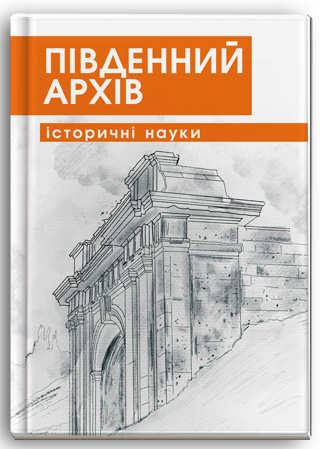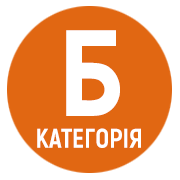STEFANIA SHABATURA AND IRYNA STASIV-KALYNETS AS ACTIVE PARTICIPANTS IN THE LVIV DISSIDENT ENVIRONMENT
DOI:
https://doi.org/10.32999/ksu2786-5118/2025-49-3Keywords:
Stefania Shabatura, Iryna Stasiv-Kalynets, Ukrainian dissident movement, general pogrom, State Security Committee (KGB), Soviet regimeAbstract
The purpose of the article is to explore the main milestones of the opposition activity of dissidents Stefania Shabatura and Iryna Stasiv-Kalynets, highlighting individual fragments from their biographies. The methodological basis of the article was the principles of objectivity, historicism, comprehensiveness, continuity, as well as a complex of general scientific and special historical methods. The work used methods of analysis and synthesis, problem-chronological, retrospective, method of comparison of information from various sources. The basis of the source base is documents from the Sectoral State Archive of the Security Service of Ukraine (SSA SSU) and the memories of the participants in the events. Results and conclusions. Stefania Shabatura and Iryna Stasiv-Kalynets during the 1960s and early 1970s were active participants in the Lviv Sixties environment, joined dissident activities, and participated in the human rights movement. On the eve of the wave of arrests of Ukrainian dissidents in 1972–1973, both activists joined in organizing New Year’s caroling – the so-called “arrested caroling”. During the implementation of the secret case of the State Security Committee (KGB) "Block" in January 1972, S. Shabatura and I. Stasiv-Kalynets ended up behind bars, and in the summer of the same year, they were sentenced to rather long terms of imprisonment and exile. The repressions organized by the KGB during 1972–1973 not only demonstrated the cruelty of the Soviet regime, but also became a catalyst for the continued struggle for human rights and national independence. Dissidents faced with arrest and exile, did not stop their resistance. In the late 1970s, S. Shabatura joined the Ukrainian Helsinki Group (UHG). The cultural figures continued their struggle after their release from prison, joining the national liberation movement of the late 1980s and early 1990s. With the declaration of Ukraine’s independence, they took an active part in cultural, educational and public activities. The study allows us to understand better the role of women in the dissident movement and their contribution to the struggle for Ukraine’s independence.
References
Гарасим Я. Із покоління тих, що смерті не боялись (Світлій пам’яті Ірини Калинець). Українське літературознавство. 2012. Вип. 75. С. 269–271. URL: http://nbuv.gov.ua/UJRN/Ul_2012_75_26 (дата звернення: 16.02.2025).
ГДА СБУ – Галузевий державний архів Служби безпеки України.
ГДА СБУ у Львівській обл. – Галузевий державний архів Служби безпеки України у Львівській області.
Герегова С. Жіночий фактор в українському правозахисному русі (70‑ті роки ХХ століття). Питання історії України. 2012. Т. 15. С. 59–65. URL: http://nbuv.gov.ua/UJRN/Piu_2012_15_12 (дата звернення: 16.02.2025).
Дисидентка Ірина Калинець і КДБ. Оприлюднено 30 документів кримінальної справи. Радіо Свобода. 2020. 9 грудня. URL: https://www.radiosvoboda.org/a/dysydent-iryna-stasiv-kalynets-kgb-kryminalnasprava/30989944.html (дата звернення: 16.02.2025).
Ігнатенко О. Львівська мисткиня Стефанія Шабатура: сучасний погляд на кримінальну справу 1972 року. Україна: культурна спадщина, національна свідомість, державність. 2013. Вип. 23. С. 630–642. URL: http://nbuv.gov.ua/UJRN/Uks_2013_23_55 (дата звернення: 16.02.2025).
Клочко Р. Невидима битва. Як дисиденти боролися за незалежність України. Київ : Віхола, 2023. 288 с.
Криса Б. Ірина Калинець: коло людської долі. Українське літературознавство. 2016. Вип. 81. С. 245–249. URL: http://institutes.lnu.edu.ua/franko/wp-content/uploads/sites/7/2017/03/81_23.KRYSA_.pdf (дата звернення: 16.02.2025).
Крупник Л. Львівська художниця Стефанія Шабатура – учасниця українського дисидентського руху 60–80-х років ХХ ст. Наукові записки. Збірник праць молодих вчених та аспірантів. Т. 16. Київ, 2008. URL: https://chtyvo.org.ua/authors/Krupnyk_Liubov/Lvivska_khudozhnytsia_Stefaniia_Shabatura_uchasnytsia_ukrainskoho_dysydentskoho_rukhu_60_80-kh_rokiv/ (дата звернення: 16.02.2025).
Лісова К. Жінки в Українській гельсінській групі. Суспільно-політичні процеси на українських землях: історія, проблеми, перспективи: матеріали VII Всеукраїнської науково-практичної конференції (Суми, 21 квітня 2020 р.). Суми : СумДУ, 2020. С. 23–26. URL: https://essuir.sumdu.edu.ua/bitstreamdownload/123456789/77963/1/Lisova_helsinska_hrupa.pdf (дата звернення: 16.02.2025).
Мельник І. Спогад про Ірину Калинець (6 грудня 2010). Zbruč. 2022. 31 січня. URL: https://zbruc.eu/node/44695 (дата звернення: 16.02.2025).
Паска Б. Валентин Мороз: прапор українського дисидентства. Івано-Франківськ: Фоліант, 2018. 366 с.
Слонська М. Жінки у дисидентському русі. Травневі студії: історія, міжнародні відносини: Збірка матеріалів V Міжнародної наукової конференції студентів і молодих вчених «Травневі студії 2023: історія та міжнародні відносини в інформаційному протистоянні». Вип. 8. Вінниця: ДонНУ імені Василя Стуса, 2023. С. 332–335. URL: https://jts.donnu.edu.ua/article/view/14482 (дата звернення: 16.02.2025).
Стефанія Шабатура: життя, окрилене стремлінням духу. Спогади. Вибрані статті / Упор. С. Дяків. Львів : Місіонер, 2021. 472 с.



